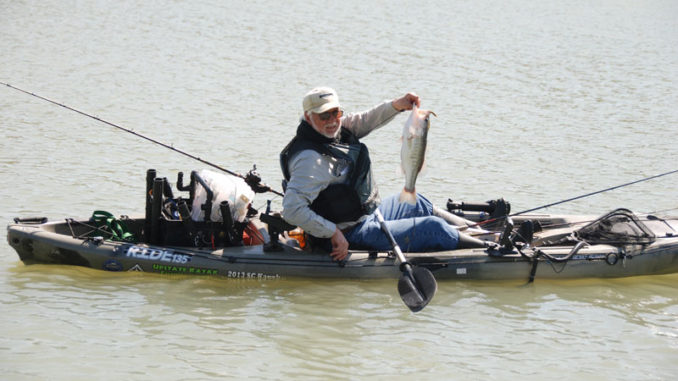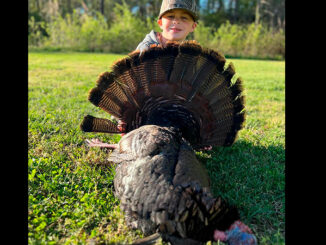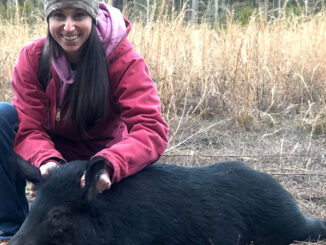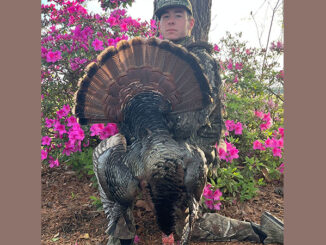
Kayak bass fishing heats up in March
The month of March kicks off the pre-spawn for bass across the Carolinas. If you are a largemouth, smallmouth, or spotted bass fan —or perhaps all three — it’s a good time to catch them, and often big ones. Bass fishing brings its own form of March Madness when fish move shallow, followed by a lot of fishing pressure.
Bass fishing shares similarities with public land hunting in many respects. With expanses of public water being fair game, those who put in the time and effort to get close to the quarry reap the biggest reward.
Fishing larger rivers for bass is a great way to catch lots of big largemouth bass on a year round basis. But especially in March. By fishing where other boats can’t, it’s just a matter of figuring out the best pattern.
The early stages of spring feeding means targeting big bass and often finding lots of them. Find deeper holes and slow roll a large bladed spinnerbait and trailer off the up-current side of the drop off. Or hold them suspended in the pool at the bottom of current just above the deepest slack water.
Try small lakes for pre-spawn bass
March is also an epic time to target smaller state lakes for bass fishing. Both Carolinas give kayak anglers plenty of choices to fish. This includes a large selection of smaller waters that provide some great, almost untapped bass fishing.
Don’t forget man-made state lakes which often are specifically managed for easy access, catch-and-release. And they often host some giant-sized black bass.
Even when fishing larger bodies of water that are also within the reach of power boating anglers, the stealth of a kayak gives kayak anglers a distinct edge over bigger boats.
Kayak fishing is deadly silent. This kind of stealth along with the low-to-the-water sight angle allows closer presentations to fish. So it’s no contest who’s going to get the bigger fish.
Rather than looking at a big impoundment as one body of water, kayak anglers should break it down into smaller segments where they can learn and pattern the fish without feeling the need to run all over the lake.
Kayak anglers who pay attention to what the fish want definitely have some advantages this month. With the water temperatures warming and bass moving shallow, it’s a great time to be on the water in a kayak.
Best Bets
NORTH CAROLINA
WHAT — Largemouth bass
WHERE — Shearon Harris Lake
HOW —Find areas so densely choked with brush or cut off from the main lake that powerboat anglers can’t reach them. Or fish the same backs of creeks and pockets that everyone else will be fishing, trying to pick fish off the beds. Take your pick of creature soft plastics, paired with jigs or jig heads to bounce around on the bottom.
LAUNCH — Shearon Harris Lake (Unimproved Access) off New Hill Holleman Rd., Hollemans Crossing, and Cross Point Landing are the standard launch sites. See more at ncwildlife.org.
INSIDER TIP — Work deeper areas when targeting pre-spawn bass. Larger bass will spawn deeper than the rest of the population. Any submerged timber in less than 10 feet of water is a good bed.
SOUTH CAROLINA
WHAT — Largemouth bass
WHERE — Dreher Island State Park on Lake Murray
HOW — Throw soft plastics, and jig and pig around boat docks. Lake Murray is a known herring lake so topwater and swimbaits in herring colors and patterns are also good bets.
LAUNCH — Lake Murray has numerous public and private access. Info at http://www.lake-murray.com/boat-ramps-public-access-areas/
INSIDER TIP — Look for shad to congregate around boat docks with suitable cover.
Don’t just crank it
Despite the name, there’s more to fishing a crankbait than just cranking it in.
Most manufacturers list the rated depth the bait will dive to.. Speed of retrieve is also a factor. Some baits were born to burn while others work best doing nothing at all. A crankbait may be designed to have a slow, wide wiggle or a tight, fast wiggle.
These facets are built-in by the manufacturer, but here’s a few suggestions to get more from the crankbait based on your actions at the other end of the rod:
Stop & Go – A stop & go may be better achieved using the rod in a pumping action versus using the reel to wind and stop. Bass typically hit during the pause, which can vary in length.
Bump & Run – A bump & run is achieved by shallow diving baits in shallow water or by deep diving or sinking baits in deeper water. While retrieving the lure, bump it into some type of cover then pause the retrieve. This mimics injured or disoriented prey, creating strikes.
Deflection – Deflection can be accomplished by reeling the bait hard to your right with the rod tip pointed perpendicular to your body, then pause, swap the rod to the other side, and reel hard to that side. An up or down deflection can be created by letting a sinking bait drop on a slow retrieve, then lift the rod tip and crank the bait to make it rise. A floating crankbait on a slow retrieve will rise, then dip when the speed is increased while raising or lowering the rod tip.
Barn Burner – This “grip it and rip it” retrieve can work when bass are lethargic or in a negative mood. The idea is to not give the fish a chance to eyeball the lure. The retrieve is so fast it triggers a reactionary strike. A great alternative to the barn burner is to burn the lure at top speed, then pause in the middle of the retrieve, allowing the bass to freight train the lure.





Be the first to comment